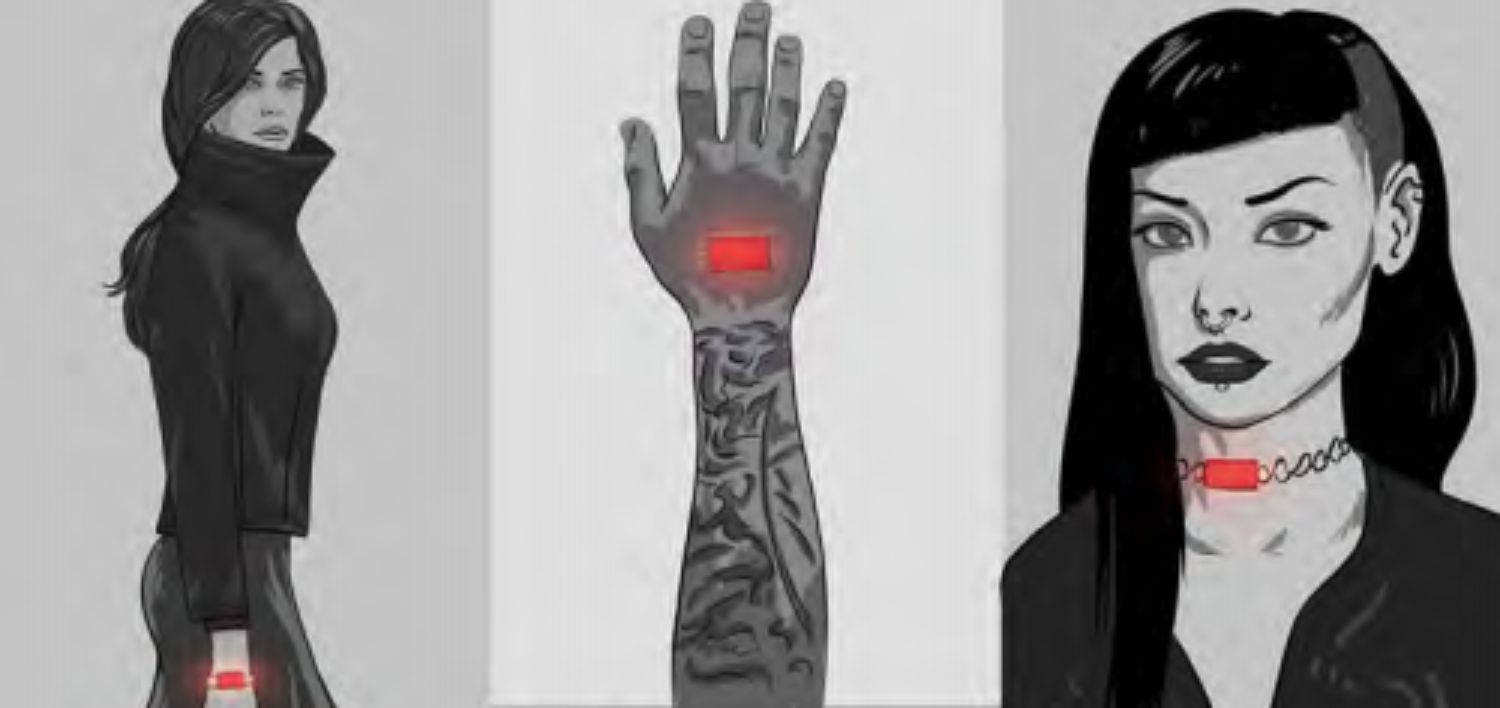Foresight professionals typically don’t use scenarios as stand-alone forecasts. In most cases, we use scenarios as a way to give some emotional or visceral weight to an otherwise information-driven report. Sometimes, a set of scenarios will be accompanied by not just the core forecast but also elements like illustrations and artifacts, representations of the scenario world that can provide their own novel insights.
IFTF's 2017 Future Now magazine, with the theme “Reconfiguring Reality,” looked broadly at the ways in which embedding technology in our physical environment could lead to social and cultural changes, with multiple scenarios to support the larger discussion. My contribution to the magazine was a scenario of what might happen when infrastructure can enforce the law. The scenario was called I Shouldn’t Have Done It, and was accompanied by an artifact called The Pass. You can find it here, starting on page 61.
I Shouldn’t Have Done It was set in 2027 in a “smart charter community” in California called Cerrito Guapo. The entire scenario is a conversation between a community official and an 18-year-old woman named Sofia. Sofia had borrowed her older brother’s Pass — a wearable smart device used for various basic activities like ID, making purchases, and monitoring health — in order to let her just-under-18 boyfriend go dancing with her. But the older brother was sick in bed, so Sofia’s actions had unexpected consequences.
Except the Community Healthcare Network knew Roberto was sick. Having his Pass show up at the club was a flag. When the biometrics saw he was dancing we knew it was unhealthy for him and could spread his illness to others. We weren’t looking to arrest anybody, we just didn’t want people to get sick like Roberto. We were worried.
[Deep sigh] Fine. We didn’t stay very long, anyway, G didn’t like the music. I would have had Roberto’s Pass back on his dresser before midnight, but Gre?gor’s a jerk, and wouldn’t let me take it back. He wanted to go to other places he couldn’t get into yet, he wanted to be “20 for one night.”
Sofia’s punishment for taking her brother’s Pass? Having her own Pass disabled for a month.
Having to go a month without my Pass was horrible. It was like nobody knew me. Nothing worked. Doors wouldn’t open. I had to have my boss sign me in, I couldn’t call a car or take the bus or even get into a public restroom.
It’s a harsh but effective punishment, isn’t it?
I read about this kind of thing in school, the Amish used “shunning” to punish people. But that was just being shunned by people. It was like the world itself was shunning me. It was awful.

Use scenarios and artifacts to bring visceral weight to your research reports.
As a foresight scenario, it remains reasonably plausible; if I were writing it today I would likely include some explicit climate aspect and emphasize the broader surveillance elements. But nothing in it has been contradicted by reality, and some of what the Pass offers can currently be found in a more rudimentary form using mobile phones.
When you read the scenario, take note of the various ways in which the technological system doesn’t work quite right. When scenarios focus on technology’s impacts, it’s important to keep the imperfections in mind. No technology is perfect, and these imperfections can be the catalyst for accidents or misbehavior.
One of my basic heuristics when thinking about the potential impacts of an emerging technology or large-scale change is to ask “how could this be used to commit crimes?”. These don’t have to be major crimes—Sofia borrowing her brother’s Pass is arguably a fairly minor infraction. The question is an attempt to get at a larger issue: Nearly all technosocial developments will open new pathways for unintended and sometimes unwanted actions. People will use new technologies in ways that the designers (and marketers) never expected. Sometimes those people will be criminals; sometimes they’ll be urban planners.
“It was like the world itself was shunning me.” When I started working on this scenario, this concept was the initial hook. It struck me that a plausible version of “infrastructure as law enforcement” (especially one set just a decade away) likely wouldn’t look like active policing; instead, it would need to take advantage of the affordances inherent to infrastructure. In both the scenario and our real world, our most critical infrastructure can be found in the systems that link us together. In a world where being connected makes life possible, being cut off from that connection would be an unforgettable punishment.
Annoyed teenager, condescending official, and fancy wearable tech aside, what makes the scenario I Shouldn’t Have Done It continue to work for me is the way it illustrates the very personal consequences that can arise from interwoven systems able to watch over us — for our own safety, of course.
*This is the second installment in the series "Foresight Forensics" by IFTF Distinguised Fellow Jamais Cascio. Read here the first piece "Foresight Forensics: How to Learn From Your Previous Scenarios" and here the third installment "Foresight Forensics: Breaking the Rules."
You may also be interested in:
- Training: IFTF Scenario Building
- Blog: Stone Soup Scenarios: How to Pull in Multiple Perspectives When Forecasting the Futurefuture-now/article-detail/rediscover-your-inner-futurist/
Want to receive free tips, tools, and advice for your foresight practice from the world's leading futures organization? Subscribe to the IFTF Foresight Essentials newsletter to get monthly updates delivered straight to your inbox.
Ready to become a professional futurist? Learn future-ready skills by enrolling in an IFTF Foresight Essentials training based on 50+ years of time-tested and proven foresight tools and methods today. Learn more ».